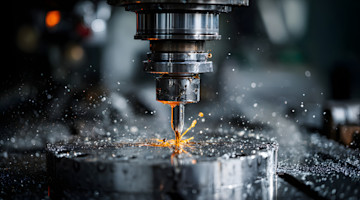There are few technologies that have truly revolutionized every aspect of life, but the internet is absolutely one. Finding an example of something that the internet has not made more efficient is difficult. Even this article was researched, submitted, edited, and, most likely, put in front of you thanks to the internet. Yet nearly a quarter century ago, prospects for internet businesses were called into question as a speculative bubble burst. By November 2000, over $1.7 trillion in value had been erased within the span of a year.
In 1996, then-Chair of the Federal Reserve Alan Greenspan famously characterized the frenzied atmosphere around the internet boom as “irrational exuberance” – a tell-tale sign that the market was in a speculative bubble years before confidence eroded and valuations fell. As with many other transformative technologies developed since the advent of the modern financial system, the promise of internet riches led to excitement, causing massive swings in the valuation of internet companies. But it is important to remember that corporate valuations are tied to so many more factors than the promise of the underlying technology alone. Had everyone collectively lost faith in the internet because of a stock market correction, life today would be hard to imagine. So many things would either be impossible or far less efficient – including the amount of time it took to write this article – without the internet.


Adding It All Together
History is full of examples of transformative technologies which were, at one time or another, mired in some sort of similar excitement and eventual correction. Additive manufacturing technology may be going through such a cycle as it finds its place in modern life. In recent months, several publicly listed additive companies have had their share value drop below the dollar-per-share minimum, putting them at risk of being removed from the exchange where their shares are traded.
While events like this are unlikely to have the same economy-wide consequences the internet bubble brought, it has caused many to begin to question the future of additive technologies. However, it is unfair to dismiss a particular technology based on market corrections alone.
Investors often disagree about valuations since they reflect expectations of future profitability. Without a crystal ball, there is no infallible way to predict success. This uncertainty is exactly what causes the natural ups and downs of the stock market, and there are many factors, other than the technology utilized by a company to make whatever is being sold, that will determine its eventual profitability.
However, it is unfair to dismiss a particular technology based on market corrections alone.
After leaving the White House, President Bill Clinton quipped about how few emails he sent during his eight years in office. Although the exact number is debatable, it was well below what many people now send in a typical weekend. The Clinton administration ended in January 2001, just as the internet bubble was beginning to unwind. It is not unthinkable that we will look back on today and marvel at how things were done without the aid of additive manufacturing. There is certainly a bright future for additive technologies, so long as the necessary research and development is not inhibited by a brief encounter with irrational exuberance.
To read the rest of the Additive Issue of MT Magazine, click here.






